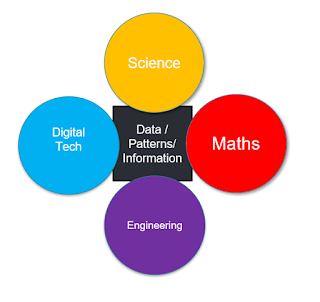Using Digital Technologies to Enhance STEM Programs at the ACT Education Directorate’s Centre for Innovation and Learning - by Paula A. Taylor
The Academy of Future Skills (the Academy) is overseen by the Learning and Teaching Branch to build science, technology, engineering and mathematics (STEM) discipline and skills across ACT public schools through the establishment of two hubs (north and south side).
 The Centre for Innovation and Learning (CIL), located in Chisholm, opened in January 2018 to provide job-embedded professional learning and coaching for ACT’s public school teachers across the Tuggeranong network with the aim to enhance students’ learning and schooling outcomes in STEM education. The educational programs developed and co-delivered by the CIL staff are an excellent example of how to integrate the Australian Curriculum across several core subjects while providing a high level of engagement and interest in STEM. I will highlight some of the work that has been done so far across many of the Tuggeranong primary schools.
The Centre for Innovation and Learning (CIL), located in Chisholm, opened in January 2018 to provide job-embedded professional learning and coaching for ACT’s public school teachers across the Tuggeranong network with the aim to enhance students’ learning and schooling outcomes in STEM education. The educational programs developed and co-delivered by the CIL staff are an excellent example of how to integrate the Australian Curriculum across several core subjects while providing a high level of engagement and interest in STEM. I will highlight some of the work that has been done so far across many of the Tuggeranong primary schools.
As a STEM curriculum writer, the first major point that must be addressed is ‘what unifies the four subject areas so that learning programs can be integrated?’ Whether you are a scientist doing experiments or a designer building a sturdy bridge, all STEM professionals use data to inform their work and make conclusions. With this in mind, the projects that I have developed intentionally look at ways of collecting, analysing and reporting of data. This is where the G Suite of programs has been instrumental in helping students develop authentic STEM skills and deep learning as they embark on being ‘data scientists’.
With one particular school, a Year 3/4 class were asked to develop a more sustainable way of cooking food using a solar energy. The project allowed students to explore scientific principles such as heat transfer, properties of materials and science inquiry skills to design and build an effective solar oven. The digital technologies and maths skills allowed the students to gather, share, and use their data to analyse and improve their project designs.
The CIL has a large range of digital sensors that allows students to wirelessly collect real-time data during the testing phase of their projects. In this case, students used temperature sensors that were paired to their Chromebooks through Bluetooth to collect temperature readings while their solar oven designs sat in the sun. With access to real-time data, students were self-motivated and driven to modify their designs to obtain the best results possible.
In order to design an effective solar oven, students had explicit lessons on heat transfer. This included testing various materials to better understand their heating properties. Any individual data collected during the testing phase was entered into a shared Google Sheet. The spreadsheet designed, allowed each student to enter three trial temperatures for each material they tested and then automatically calculate an average. An important aspect of Science Inquiry, particularly in the upper primary years, is to be able to discard invalid data and make conclusions based on reliable data sets. This is only possible if students have access to each other’s values. Keeping a close watch on the spreadsheet as data was entered helped sharpen their understanding of fair testing as they used mathematical reasoning.
Another important aspect of working scientifically was to communicate our findings. There were plenty of options for students to showcase their projects and share their reports using the G Suite of programs. Again, with the collected data, students have an opportunity to develop their graphing skills which is easily accomplished within Google Sheets.
STEM is a great opportunity to practice all of the dispositions and skills of a researcher, builder, designer, mathematician and scientist. The inquiry-based programs rely on constructivist teaching where learners are actively involved in developing their own meaning and knowledge. Collecting and analysing data is not only excellent pedagogical practice for learning the STEM disciplines, but a highly motivating opportunity for students who enjoy using the digital technologies involved.




Comments
Post a Comment